Detroit Tigers: The Five Best Trades in Franchise History
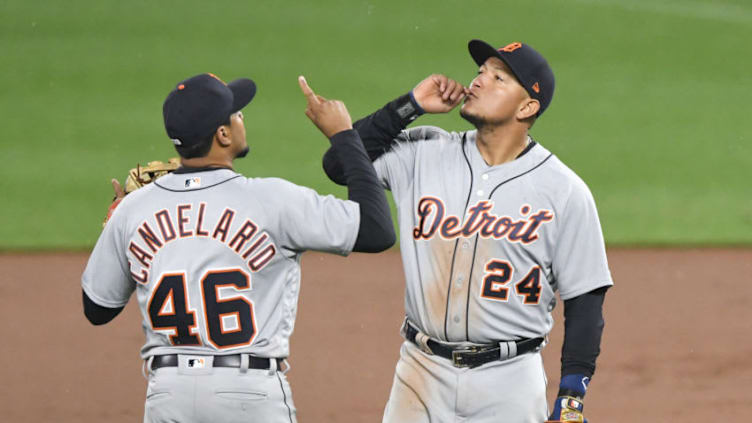

The Detroit Tigers have had their fair share of trades that went exceptionally well. Here’s a look at the best of the best in franchise history.
The Detroit Tigers have a history of being trade happy. Former General Manager Dave Dombrowski was nicknamed ‘trader Dave’ during his tenure in the Motor City. Dombrowski had his share of outstanding trades, with a few that backfired as well.
The 2018 Detroit Tigers have quite a few players who were acquired via trade. It’s a bit too early to tell if Detroit’s acquisition of Michael Fulmer or Jeimer Candelario will become some of the greatest trades in team history, but they are certainly on the right track.
Below is a list of the five greatest trades in team history. In each instance, the Tigers were able to acquire high level talent without sacrificing much in return. Because most trades these days involves stars for prospects, these are primarily instances where the Tigers traded prospects to acquire a quality big leaguer, and in turn the prospects did not pan out. A few of Detroit’s worst trades involve those prospects eventually turning into quality big players (cough, Eugenio Suarez, Robbie Ray, cough).
Before we begin, we have two honorable mentions. It was very hard to narrow this list down from seven to five, so I wanted to shout out the two trades that just missed the cut:
Detroit acquires Max Scherzer, Austin Jackson, Phil Coke and Daniel Schlereth for Edwin Jackson and Curtis Granderson
This was a massive three team trade with the Diamondbacks and the Yankees. Although the Tigers acquired a Cy Young winner, an above average center fielder and a pair of left-handers, they also gave up a decent starting pitcher and a potential Hall of Fame center fielder in Curtis Granderson. No doubt this was a great trade for the Tigers, but the quality of talent they surrendered puts it just outside the top five.
Detroit acquires Doug Fister and David Pauley for Charlie Furbush, Casper Wells, Francisco Martinez and Chance Ruffin
Another trade that just missed the cut was Detroit’s acquisition of right-handers Doug Fister and David Pauley from the Mariners in 2011. Fister went 8-1 with a 1.79 ERA in the second half that year. He ended up going 32-20 with a 3.29 ERA in 2.5 seasons with the Tigers.
Meanwhile, Furbush was an okay LOOGY for the Mariners for a few years, and Wells and Ruffin never amounted to much. This one was a big win for Dave Dombrowski and co.
Now, let’s get to the good stuff:
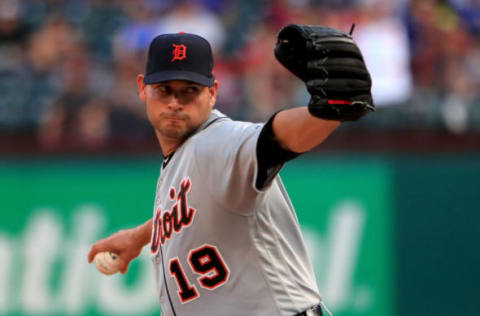
Detroit acquires Anibal Sanchez, Omar Infante from Miami in exchange for Jacob Turner, Rob Brantly and Brian Flynn
The Detroit Tigers were on a five-game winning streak and sitting atop the AL Central with a 52-44 record when they decided to go all-in. They shipped away Jacob Turner, who had started the day before, along with two other prospects to the Marlins. Turner was selected ninth overall in 2009, and was considered one of the best Tigers prospects since Justin Verlander.
In exchange the Tigers received an old friend in Omar Infante, who had been with the Tigers from 2002-2007. He had gone to Atlanta and Miami, even making an All-Star game in 2010. The Tigers desperately needed a second baseman, with Ramon Santiago, Ryan Raburn and Danny Worth splitting time at the keystone prior to Infante’s arrival.
Infante only hit .257/.283/.385 down the stretch, but that was still an upgrade for the Tigers. He went on to have an excellent 2013 season, slashing .318/.345/.450 with 10 home runs before signing with the Royals in the offseason.
The Tigers had four excellent starting pitchers in 2012: Verlander, Max Scherzer, Rick Porcello and Doug Fister. They had been struggling all season to fill their last rotation spot. Drew Smyly, Casey Crosby, Adam Wilk and Turner all got a shot at the role.
That lead to the decision to grab Anibal Sanchez from the Marlins. Sanchez went 4-6 with a 3.74 ERA down the stretch, and of course won the ERA title the next year with a 2.57 ERA and a 14-8 record.
What Detroit Gave Up
Overall, Sanchez and Infante combined for a 11.3 bWAR after coming over to the Motor City. Turner, along with Brian Flynn and Rob Brantly, combined for a -1.8 bWAR in Miami. This trade was highway robbery for the Tigers, thanks primarily to Turner’s career not panning out.
Turner is just 27 years old, and after a 5.08 ERA in the National’s bullpen last year, he is back in Miami in 2018. Through 5.2 innings, he has a 15.88 ERA.
The Detroit Tigers set out to acquire a second baseman and another starting pitcher at the 2012 trade deadline. They gave away three prospects who never panned out, and filled their two roster gaps to perfection. Hard to argue with this one.
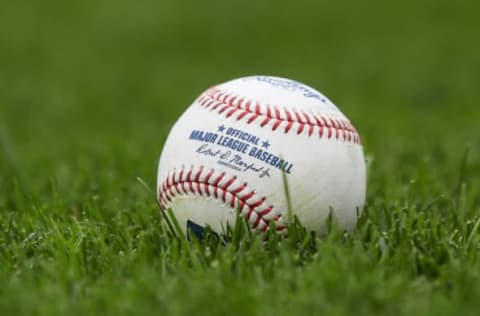
Detroit acquires Willie Hernandez, Dave Bergman from Philadelphia in exchange for Glenn Wilson, John Wockenfuss
The trade that won the Tigers the 1984 World Series. On March 24, just over a week before the season began, the Tigers shipped outfielder Glenn Wilson and catcher John Wockenfuss to Philadelphia in exchange for Willie Hernandez and Dave Bergman.
Wilson had played in 144 games the previous year for the Tigers, but the acquisition of Darrell Evans and a full outfield of Larry Herndon, Chet Lemon and Kirk Gibson meant he was the odd man out. Likewise, veteran John Wockenfuss was no longer needed with catchers Marty Castillo and Dwight Lowry on the roster.
Wilson had a solid career in Philadelphia, even making an All-Star game in 1986. And Wockenfuss was a valuable reserve in 1984 before retiring in 1985. While these two were solid in Philly, Hernandez and Bergman were crucial pieces to Detroit’s 1984 squad.
Detroit’s Haul
Hernandez assumed the role of closer in Detroit and had one of the best seasons in history by a relief pitcher. He went 9-3 with a 1.92 ERA in 140 1/3 innings. He led the league with 80 appearances and 68 games finished. Hernandez was not only an All-Star, but he won both the Cy Young Award and the AL MVP award. It was a truly magical season for the Tigers and Hernandez.
He went on to pitch five more years in the Motor City, making two more All-Star games and finishing with 120 saves and a 2.98 ERA.
Bergman spent the next nine seasons in Detroit, primarily as a role player. He hit .273 with seven home runs in 271 at-bats in 1984, playing first base.
While Glenn Wilson turned out to be a solid player for the Phillies, the Tigers likely don’t win the World Series without Hernandez. As such, this goes down as one of the best trades in team history.
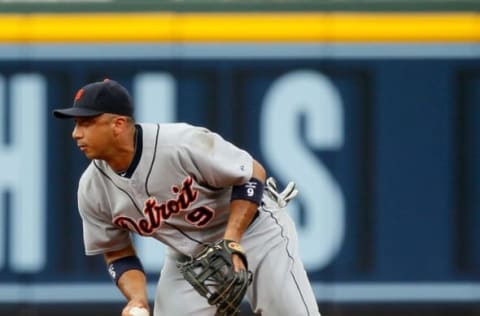
Detroit acquires Carlos Guillen from Seattle in exchange for Ramon Santiago and Juan Gonzalez
This is probably my favorite trade in Tigers history. In January of 2004, coming off the worst season in franchise history, the Tigers decided to shake things up. They dealt their starting shortstop from 2003, Ramon Santiago, along with minor leaguer Juan Gonzalez to the Mariners to acquire Carlos Guillen.
At the time, Guillen was a six-year veteran who had hit .264 with a 93 OPS+ in his career. However, the Tigers saw something in him they liked and pulled the trigger.
Guillen instantly went on to become one of the best shortstops in Tigers history. He hit .318 with 20 home runs and 12 stolen bases the following year, making the first of three All-Star games and finishing 24th in MVP voting.
Santiago’s Path Home
Ramon Santiago makes this trade. After going to Seattle, he only played in 27 games from 2004-2005. He hit an abysmal .170/.291/.191 and was released in November of 2005. The Tigers decided to give Santiago another chance, signing him in January of 2006. To add insult to injury (to the Mariners) Santiago developed into a high quality utility infielder.
From 2006-2013, Santiago hit .250/.318/.343 with a 7.0 bWAR. While he was no means elite, he certainly filled a valuable role for the Tigers.
Getting Carlos Guillen for a player who ended up back in the Motor City just two years later was one of the best deals in franchise history, and helped Detroit exceed expectations and go all the way to the World Series in 2006.
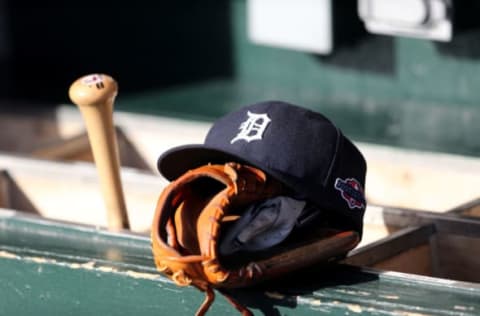
Detroit acquires Chet Lemon from Chicago in exchange for Steve Kemp
On November 27, 1981, the Detroit Tigers and the Chicago White Sox exchanged two young All-Star outfielders. Steve Kemp had made the All-Star team in 1979 and had received MVP votes the year prior in 1981. He was just entering his age 27 season, and looked like a future star for the Tigers.
Lemon had also made two All-Star games and was a tad younger, but both looked like they were on a similar path to super-stardom. However, only one of them would pan out. Fortunately for the Tigers, it was Lemon.
After the trade, Lemon immediately inserted himself into the starting lineup in centerfield. He played for the Tigers all the way through 1990, hitting .263/.349/.437 with a 117 OPS+ and a 30.7 bWAR.
What Detroit Gave Up
Kemp’s career went the opposite direction. He had a productive 1982 season with the White Sox, hitting .286 with 19 home runs and seven steals. He became a free agent after that and signed with the New York Yankees, only hitting .264 in two partial seasons before getting traded again, this time to the Pirates. Two years in Pittsburgh and one final year in Texas and Kemp was out of baseball.
His 3.5 bWAR post trade was nearly 1/10 what Lemon earned with the Tigers, making this trade one of the best the franchise ever completed.
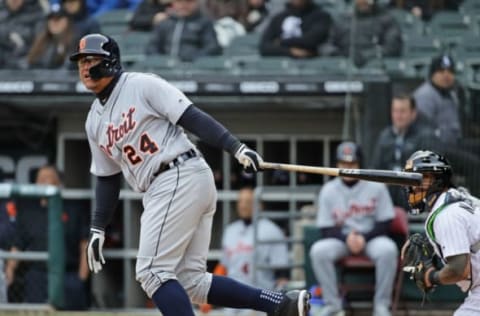
Detroit acquires Miguel Cabrera, Dontrelle Willis from Miami in exchange for Cameron Maybin, Andrew Miller, Mike Rabelo, Burke Badenhop, Dallas Trahern and Frankie De La Cruz
Was there ever a doubt? On December 4, 2007 Dave Dombrowski committed grand theft in the state of Florida. Perhaps the best star-for-prospects trade in history, the Tigers acquired Cabrera and left-hander Dontrelle Willis in exchange for six prospects. Miami surely figured that at least one, maybe two of those prospects would go on to become stars in their own right.
While Andrew Miller has developed into a star, it has been as a lights out reliever – and it certainly wasn’t in Miami. Miller went 10-20 with a 5.89 ERA for the Marlins.
Cameron Maybin has also developed himself into a capable starting outfielder, although he only hit .257 in 144 games with the Marlins from 2008-2010. He found some success with the Padres and actually had his best big league season in 2016…..with the Tigers. Ouch.
No matter, the Marlins still received four other prospects. Something good had to come of that right?
It didn’t
Frankie De La Cruz threw nine innings in 2008 with the Marlins, giving up 18 earned runs with a 4/11 K/BB ratio. He only threw 16.1 more innings in his career.
Mike Rabelo hit .202/.256/.294 in 34 games with the Marlins in 2010, never playing in the big leagues again.
Dallas Trahern never reached the major leagues.
The most successful of the bunch was reliever Burke Badenhop, who threw 250 2/3 innings with the Marlins from 2008-2011. He posted a 4.34 ERA and a 96 ERA+.
The total combined WAR (with the Marlins) for those six players equals 0.3. The Marlins got 0.3 total bWAR in exchange for one of the greatest players of this entire generation. I’d call that win.
Next: Tigers: Best Player to wear each number
Not every trade has worked out well for the Detroit Tigers. However, these are five examples of trades that helped the Tigers immensely. In some cases, they may have been directly responsible for the team being in the World Series.